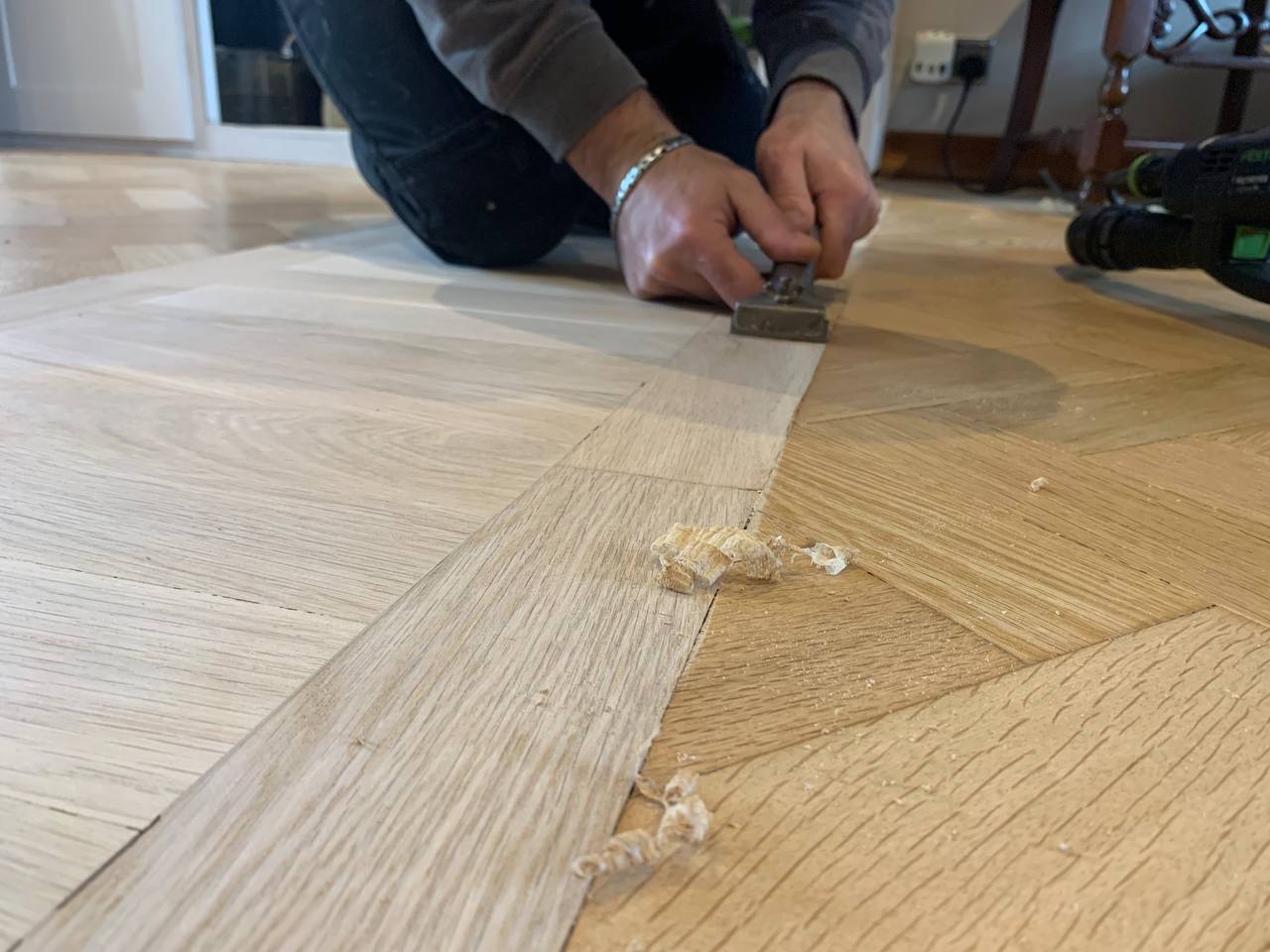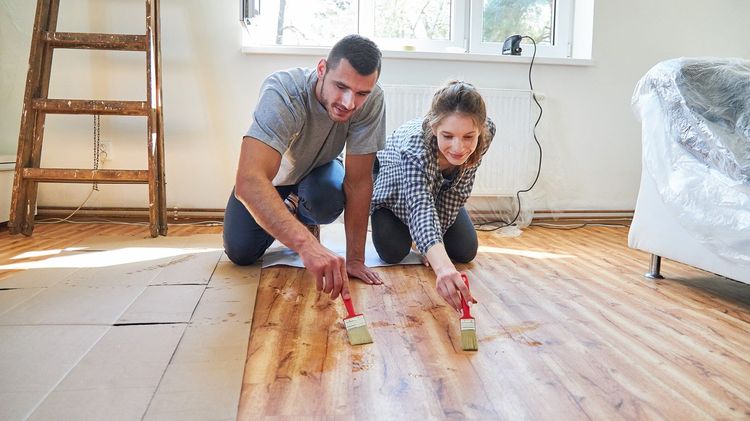Is it Time to Replace or Repair Your Hardwood Floors

High-quality hardwood floors are expensive and quite fragile. That’s why it’s important to be vigilant when it comes to scratches, water damage and other issues. The same applies to low-quality and ageing floors.
But how do you know if damage warrants repair or replacement? Hardwood repairs are usually possible.
Perform repairs and maintenance regularly, and you can prevent further long-term damage in the future
The following problems can lead to serious problems with hardwood floors. But if you tackle them properly, you could save them from a premature end.
Potential Problems with Hardwood Floors
Badly Laid Hardwood Floors
A poor hardwood floor installation not only affects the look of a room, but it also has serious consequences on the floor’s lifespan. That’s why you should take the following steps:
- Prepare the floors fully before installation
- Adhere to the manufacturer’s installation instructions
- Use the tools outlined in the manufacturer’s instructions
- Plan the installation before you start installing floorboards
- If you’re not confident, hire floor installation experts
Cupped Flooring
Cupped flooring is a common phenomenon that involves the centre of planks or boards becoming dipped while the edges rise. In most cases, excess moisture is to blame for cupping — which may be the result of an improperly sealed subfloor. This is why it's so important to install a moisture barrier before the installation process begins.
Repairing cupped flooring could be a viable option if the problem is localised. This process involves removing and replacing only the affected boards. However, a moisture barrier must be installed before replacement boards are installed. Unfortunately, it’s usually faster and cheaper to replace the entire floor if cupping is widespread.
Crowned flooring is the opposite of cupped flooring — it involves the centre of the plank or board rising, creating a slope to the edges. The most common cause of this problem is shrinkage caused by hardwood planks drying out over time. This may also happen shortly after sanding a cupped floor.
Before you repair or replace your cupped or crowned hardwood floor, address the root cause of the moisture; otherwise, you’ll simply have to replace the affected planks again in the near future.
Gapping
Over time, gaps between the lengths and ends of hardwood planks can emerge. This happens due to the changing environmental conditions caused by the changing seasons. Humidity plays a large part in this process. A high-quality floor is left with small expansion gaps to allow for expansion and contraction. However, gaps that become excessively large will need to be either replaced or repaired.
Chips and Cracks
The inappropriate use of nails, poor workmanship, pressure, high traffic levels and a range of other issues can lead to chips and cracks in hardwood floors. Many of the issues that lead to serious cracks and chips happen during the initial installation. A good floor installer can prevent these mistakes.
A lot of minor chips and cracks can be repaired relatively simply. If you notice individual chips and cracks, you can simply replace the affected planks — but only if you’re not at an advanced stage of the installation process. This is why it’s always a good idea to keep a stock of replacement planks for a high-quality hardwood floor.
Water Damage
A lot of damage to hardwood floors is a direct result of water or moisture. While hardwood floors should be able to withstand a moderate amount of moisture, large spillages, floods or long-term damp problems can ruin a floor very quickly.
Even the smallest spillages must be mopped up as quickly as possible. The longer you leave standing water on a hardwood floor, the greater the chance of serious damage. A lot of people fit hardwood flooring in their kitchen. While this type of floor looks great in a traditional kitchen, it is susceptible to spillages and leaks from dishwashers and washing machines.
In some cases, drying the floor and putting a dehumidifier in the affected area can limit the damage caused by water. But if the damage is extensive, you may need to replace your hardwood flooring.
Heavy Traffic
A quality hardwood floor can withstand a reasonable amount of punishment. If you repair and maintain it regularly, your floor should last for many years. But the everyday wear and tear that is part of family life can take its toll. Heavy shoes, furniture, pets, children and a range of other factors play a part in the deterioration of hardwood flooring.
If you notice scratches, you may be able to buff or sand them out — before resealing the affected area. But if the damage is deep and wide, you may need to ask a flooring specialist to inspect the damage. In some cases, replacing the entire more may be the most cost-effective option.
Gouges
A gouge is a deep crevice — usually caused by furniture, shoes, falling objects and structural issues within a hardwood plank. The size of the gouge will determine whether the flooring can be repaired.
A lot of people turn to wood putty in order to fill gouges in hardwood floors. Unless it’s almost identical in colour, however, you could make your floor look even worse. You may need to try a few wood putty products before you find the perfect match. If the patched repair still stands out, there is the option of re-treating the entire floor to make it blend in.
If you notice a serious scratch or gouge, your first task is to sand down the area until it’s level. Clean the area with a tack cloth, and re-finish it to create a uniform finish. However, the best way to approach seriously damaged planks is to replace them with spares.
Pet-Related Damage
Both dogs and cats have claws, which can cause serious scratches and gouges. But there’s also the issue of urine, which has the potential to cause serious stains and odours.
As soon as you notice urine on your hardwood flooring, wipe it up with a clean and absorbent cloth. Use a dedicated urine odour remover that’s kind to real wood. And don’t forget the subfloor beneath. You may need to remove the affected plank and treat the subfloor odour, too.
Remember: acting fast when your pet leaves a mess is the best way to prevent odours from occurring.
When Is it Time to Replace a Hardwood Floor?
Hardwood floors should last for many years. If they’re properly maintained and repaired regularly, a quality hardwood floor can last a lifetime. When problems occur, repair should always be your priority. An experienced hardwood floor repair technician can save you a lot of money by repairing the affected area.
If the damage doesn’t involve cupping, crowning, buckling or gapping, refinishing your hardwood floor may be the best option. However, you should always seek the professional advice of a floor restoration expert before proceeding. Even the best hardwood floors can only be refinished a few times before they begin to degrade.
There may come a time when hardwood floor replacement is the most cost-effective option.



